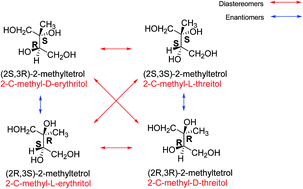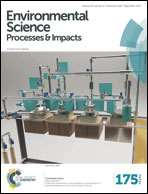A review of stereochemical implications in the generation of secondary organic aerosol from isoprene oxidation
Abstract
The atmospheric reactions leading to the generation of secondary organic aerosol (SOA) from the oxidation of isoprene are generally assumed to produce only racemic mixtures, but aspects of the chemical reactions suggest this may not be the case. In this review, the stereochemical outcomes of published isoprene-degradation mechanisms contributing to high amounts of SOA are evaluated. Despite evidence suggesting isoprene first-generation oxidation products do not contribute to SOA directly, this review suggests the stereochemistry of first-generation products may be important because their stereochemical configurations may be retained through to the second-generation products which form SOA. Specifically, due to the stereochemistry of epoxide ring-opening mechanisms, the outcome of the reactions involving epoxydiols of isoprene (IEPOX), methacrylic acid epoxide (MAE) and hydroxymethylmethyl-α-lactone (HMML) are, in principle, stereospecific which indicates the stereochemistry is predefined from first-generation precursors. The products from these three epoxide intermediates oligomerise to form macromolecules which are proposed to form chiral structures within the aerosol and are considered to be the largest contributors to SOA. If conditions in the atmosphere such as pH, aerosol water content, relative humidity, pre-existing aerosol, aerosol coatings and aerosol cation/anion content (and other) variables acting on the reactions leading to SOA affect the tacticity (arrangement of chiral centres) in the SOA then they may influence its physical properties, for example its hygroscopicity. Chamber studies of SOA formation from isoprene encompass particular sets of controlled conditions of these variables. It may therefore be important to consider stereochemistry when upscaling from chamber study data to predictions of SOA yields across the range of ambient atmospheric conditions. Experiments analysing the stereochemistry of the reactions under varying conditions of the above variables would help elucidate whether there is stereoselectivity in SOA formation from isoprene and if the rates of SOA formation are affected.


 Please wait while we load your content...
Please wait while we load your content...